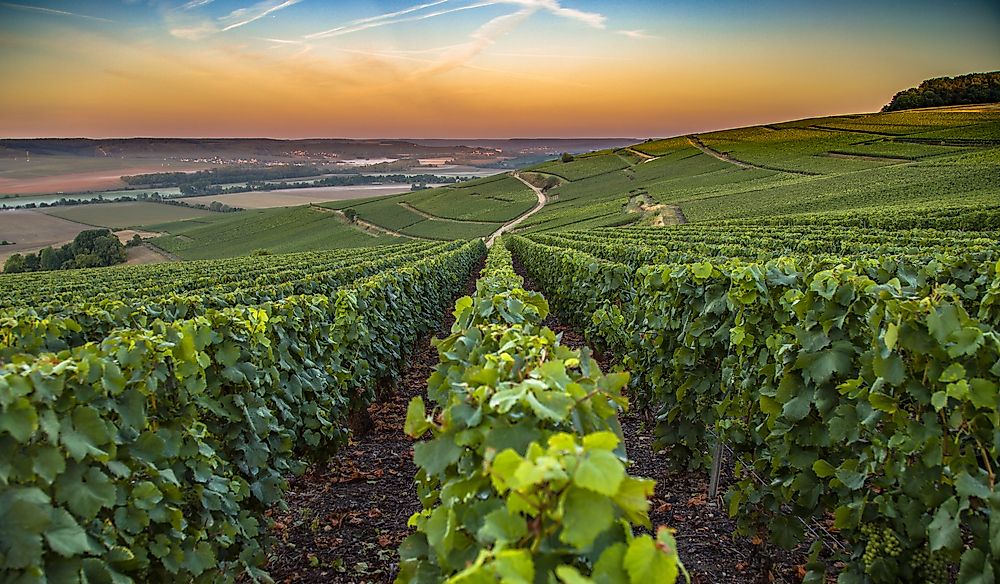Where Does Champagne Come From?

Champagne is a sparkling wine that is produced in the Champagne region of northeastern France. The region is located about 160 km (100 miles) to the east of Paris, the French capital. Reims and Épernay are the commercial centers of the region. Sparkling wine only qualifies as champagne when it is produced from grapes from the Champagne region and follows the production procedure, including the secondary fermentation of wine while in the bottle and specific vineyard practices. In 1999, a record 327 million bottles of champagne were produced in anticipation of the end of millennium celebrations. A new record of 338.7 million bottles was set in 2007, and since then the consumption of the alcoholic drink has been on the rise.
Legal Rights
Many people use the term “champagne” as the general term for sparkling wine, but the French region maintains the legal right over the use of the name as established by the Treaty of Madrid in 1891 and reaffirmed by the Treaty of Versailles. The European Union protects the exclusivity of champagne, but American producers are allowed to use the label on their products if the name was in use before 2006.
In March 2008, France proposed the expansion of the Champagne region to include 40 more villages to accommodate the global demand. Critics feared that the expansion of the region world compromise the quality of fruits gathered, but experts argued that it was more of consolidation rather than an extension since the villages in question were located within the Champagne region rather than outside.
The Production Process
There are several ways of producing sparkling wine, but champagne can only be manufactured by a process known as méthode champenoise. Pinot Meunier, Pinot Noir, and Chardonnay grapes are the primary fruits, but tiny amounts of Pinot Gris, Petit Meslier, Pinot Blanc, and Arbane are used. The grapes are harvested, processed, and fermented before being bottled with a slight amount of yeast and sugar to create a secondary fermentation in the bottle. The secondary fermentation creates the distinctive bubbles in champagne bottles. The bottles are stored horizontally for not less than 15 months after which they are turned upside down and the dead yeast removed.
The Magic of the Champagne Region
Two factors combine to make Pinot Meunier, Pinot Noir, and Chardonnay grapes grow well in the Champagne region. First, the region is slightly cooler than other grape growing regions of France, thus creating conducive climatic conditions for the growth of the grapes. Secondly, a series of large earthquakes thousands of years ago resulted in earth movements that exposed soil with the right acidity level for the growth of grapes.
Dom Perignon and the Evolution of Champagne
Contrary to popular misconception, Dom Perignon did not invent champagne but made quite a significant impact on the industry in the late 17th and early 18th centuries. Back then, sparkling wine was not a favorite beverage as wine production was a dangerous activity, and bubbles were considered a production flaw. Champagne bottles regularly exploded due to imprecise temperatures during secondary fermentation and when one bottle exploded a chain reaction damaged the entire cabinet. Perignon standardized the production method to avoid explosions, packaged the wine in thicker glass bottles to withstand the pressure, and added a rope snare to keep the cork in place.











